Representations of animal power, horns are a reflection of the crescent moon, which appears on many flags, coats of arms and wizards' hats to connote mystic influence. Some sources:
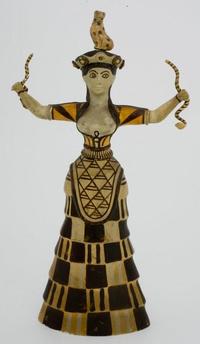
1. The upraised arms of the ancient Cretan snake-wielding goddess duplicate the crescent moon, as well as the horns of the bull, the animal most associated with Crete via the Minotaur. Priests of every religion have always used this posture.
2. In the Odyssey, Penelope expresses the belief that truthful dreams pass through a gate of polished horn.
3. God told Moses to have an altar made with horns at the four corners (Ex. 27:2), a typical feature of altars in the ancient Levant. Horned animals were sacrificed thereon.
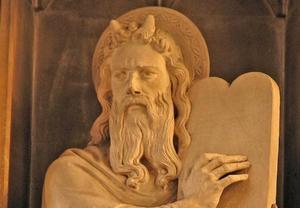
4. When Moses came down from the mountain, his face had sprouted horns. This passage, Ex. 34:29-30, is now usually translated to portray radiance rather than horns -- it can be either -- bringing out another connection to the moon.
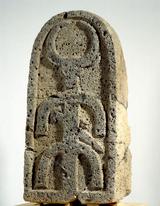
5. The golden calf made by the Israelites had horns. The people said of it, "These are our gods [elohim], O Israel, who brought you up from the land of Egypt" (Ex. 32:4). Exodus thus illustrates the Hebrews' confusion about what divine power they were following -- the powerful horned deliverer Moses, the horned golden calf resembling Hathor (a primary cow mother-goddess from abandoned Egypt), or the horned Canaanite storm god Baal, a perennial rival of Yahweh often represented as a bull. There is probably no common etymology between Baal (Lord) and bull (at its Indo-European root, a swollen thing such as a phallus), more's the pity.
6. The Hebrew word for horn is qeren. Via Latin cornu, also derived from the idea of something curved, it persists today in crown and corona.
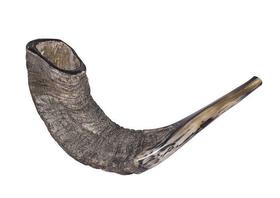
7. The shofar, a trumpet made from a ram's horn, makes its first biblical appearance in Ex. 19:16 as a loud instrument God uses to announce himself.
8. Saxophones and trumpets, sacred to jazz musicians, are called horns.
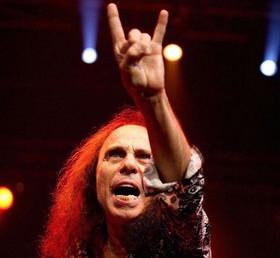
9. The late singer Ronnie James Dio popularized the "horns" hand gesture, a charm against evil he inherited from his Italian grandmother. His fans interpret it as "We rock."
10. Devils are usually depicted as having horns, because when early propagators of Christianity displaced pagan traditions, they did their best to portray prior religious symbols such as horns as demonic (1 Cor. 10:20; Rev. 13:1). The effort was successful.
